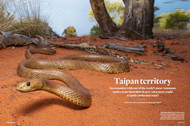Taipan Territory - Article featured in Australian Geographic issue 144 (2018)
Posted by Ross McGibbon on 1st Jul 2018
Imagine for a moment that you are a passionate surfer. You talk about surfing to anyone that will listen. You research surfing in every book and magazine you can find and spend all your spare time travelling to exciting locations where you can find the best waves. Now translate that enthusiasm into finding and photographing reptiles in the wild, and you'll gain a small insight into my passion for these animals.
This passion is about to lead fellow wildlife photographer Tim Squires and me on an expedition into the remote Great Victoria Desert. Our destination is about 1500km inland of Perth, Western Australia, where we hope to find and photograph the western desert Taipan.
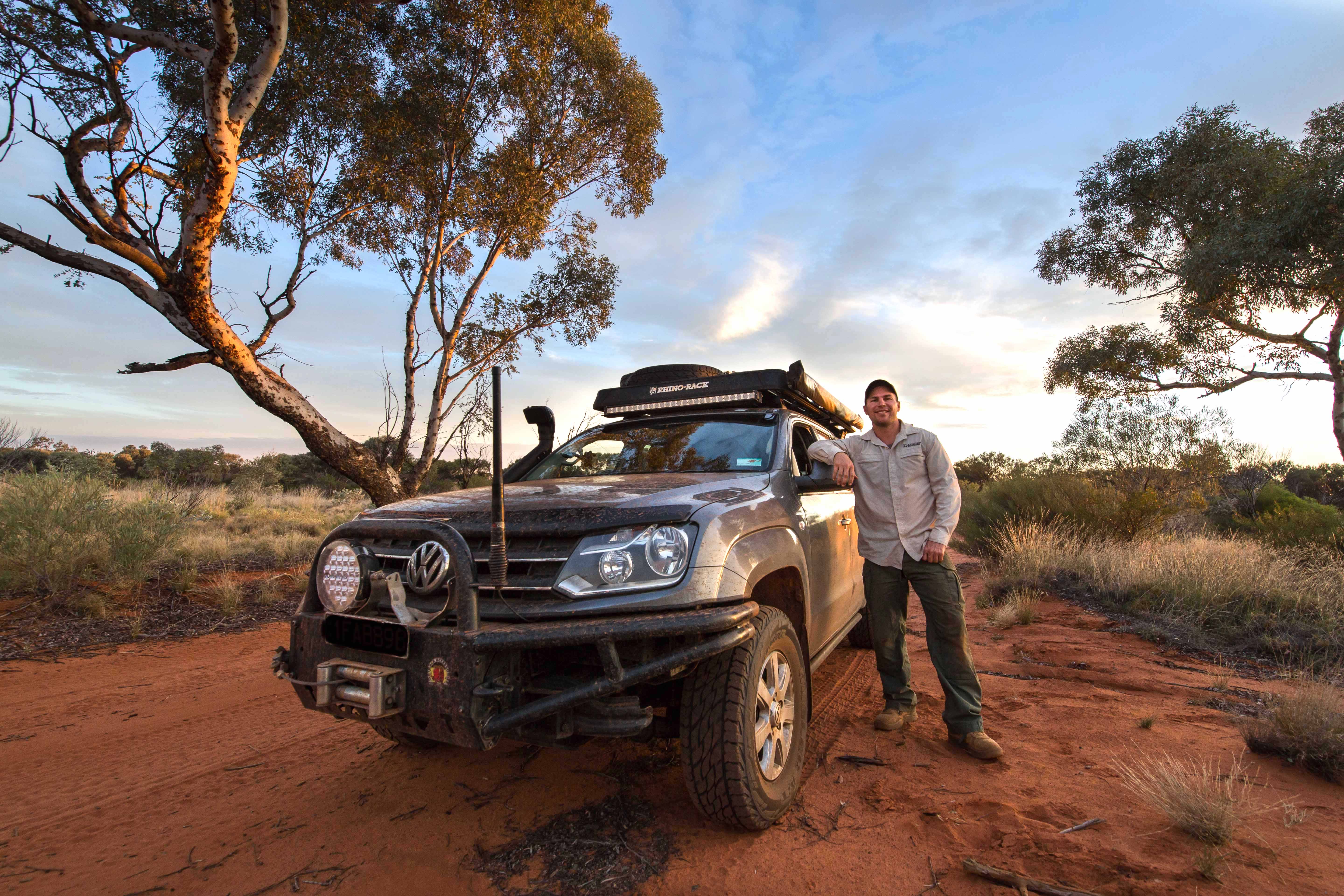
Me and my trusty VW Amarok in the Great Victoria Desert
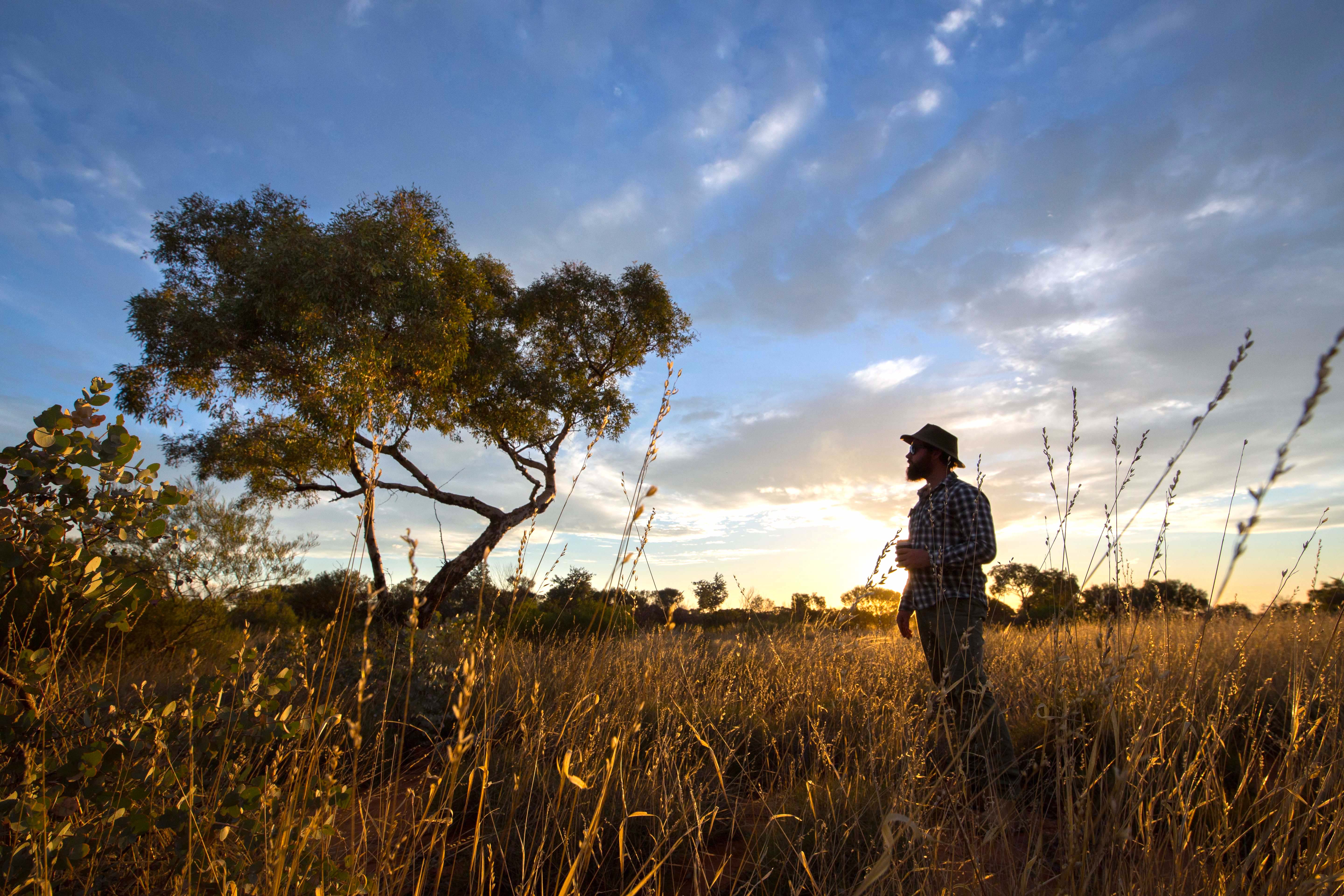
Tim enjoying a cold one amongst the spinifex
Taipans are among the most infamous snakes in the world. Australia is home to all three known species: the notorious coastal Taipan (Oxyuranus scutullatus), also found in southern New Guinea. The inland Taipan (O. microlepidotus); believed to possess the most experimentally toxic venom of any land snake. And our target for this trip - the more recently discovered western desert taipan (O. temporalis).
Almost every Australian has heard of taipans. They are formidable snakes with large fangs, extremely potent venom and agility that demands the utmost respect from even the most experienced snake handlers. Again using surfing as an analogy, photographing taipans is like big wave surfing; succeed, and you won't remember a happier moment, but get it wrong and it may cost you your life, a consequence that is still fresh in the back of our minds. It is nearly one year since our last taipan expedition, where Tim almost lost his life after being bitten by an inland taipan, and it was an ordeal neither of us is eager to repeat.
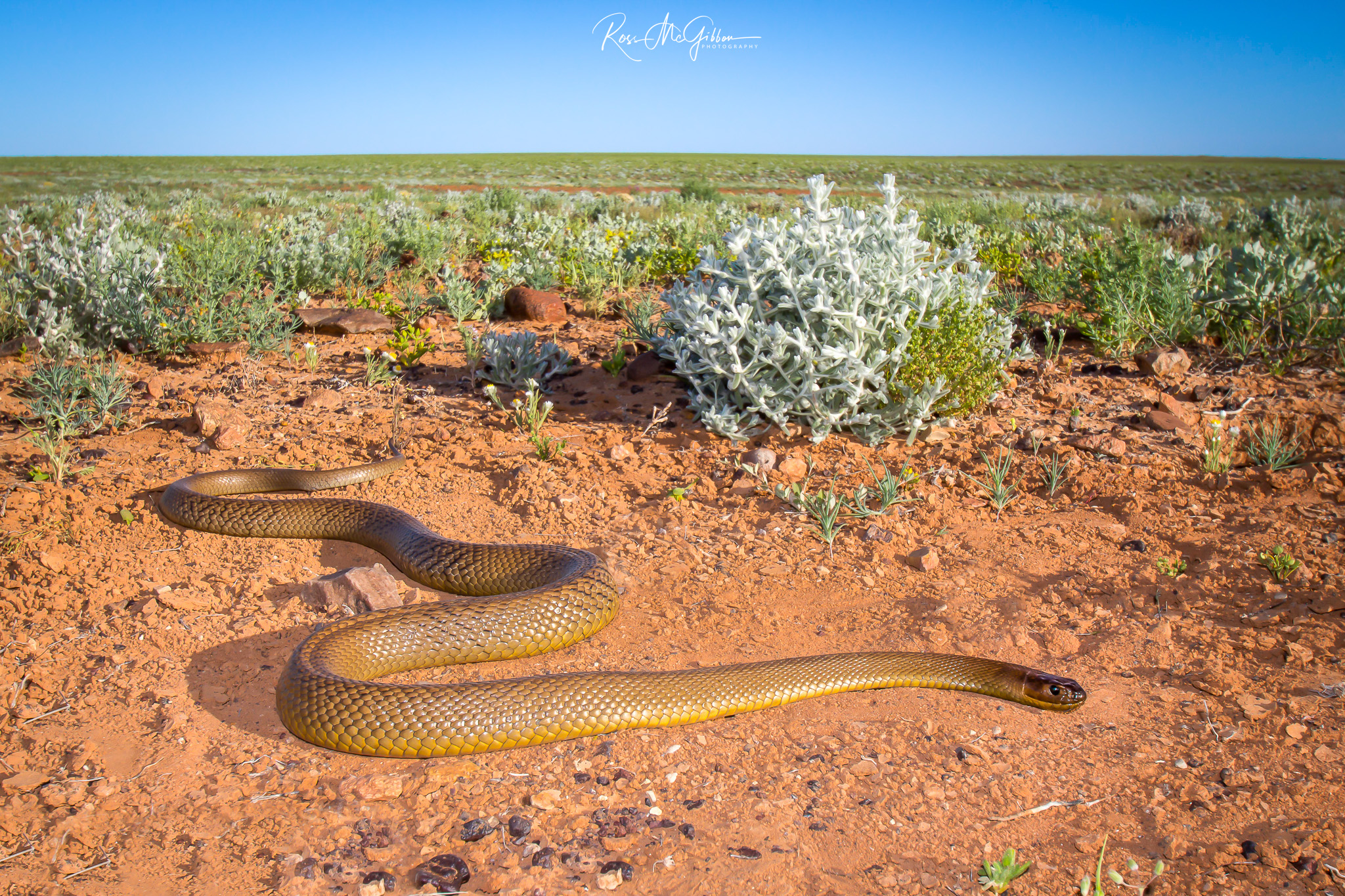
The Inland Taipan that nearly took Tim's life in 2016
But where there is risk, there is reward, and for me, truly living is all about having authentic experiences, which means getting out and seeing these wild places and animals with my own eyes. On top of my list is the western desert taipan from the central deserts, a reptile only described by scientists in 2007, with fewer than 20 encounters recorded by herpetologists and reptile enthusiasts. Having said that, the indigenous Pila Nguru (Spinifex People) would have encountered this snake for more than 20,000 years.
Our energy is high as Tim and I hit the road. Almost four hours into the drive, I reach for the air conditioning, "Damn, it's not working. It worked fine yesterday," I say. "Who needs air conditioning in the desert anyway" Tim replies sarcastically.
We instantly forget our first-world problems as we encounter the first reptile of the trip; a western bluetongue lizard is crossing the road just ahead of us. We safely escort it from the road and capture some photos before watching it scurry into the undergrowth. What better way to kick off an outback road trip than with such an iconic Australian reptile.
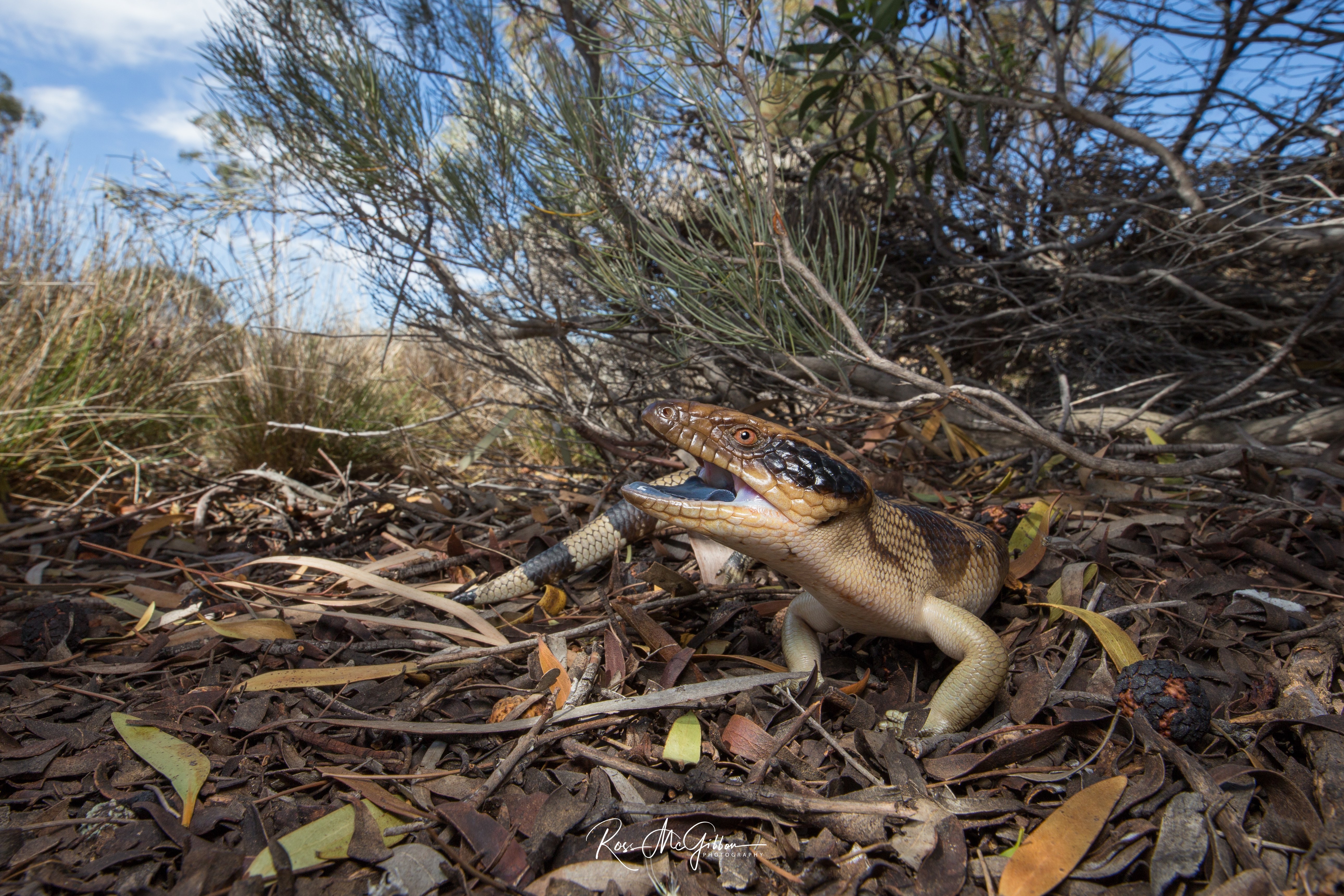
Western Blue-tongued Skink (Tiliqua occipitalis) Moorine Rock, Western Australia
As the bitumen road turns to dirt east of Kalgoorlie, Tim shouts, "Stop! Snake!" and I bring the Amarok to an abrupt halt. As we rush over to the snake, our excitement quickly turns to disappointment as we realise it's been run over and killed. It's a shame because this beautiful Western brown snake would have made for a great first snake species to film if it were alive.
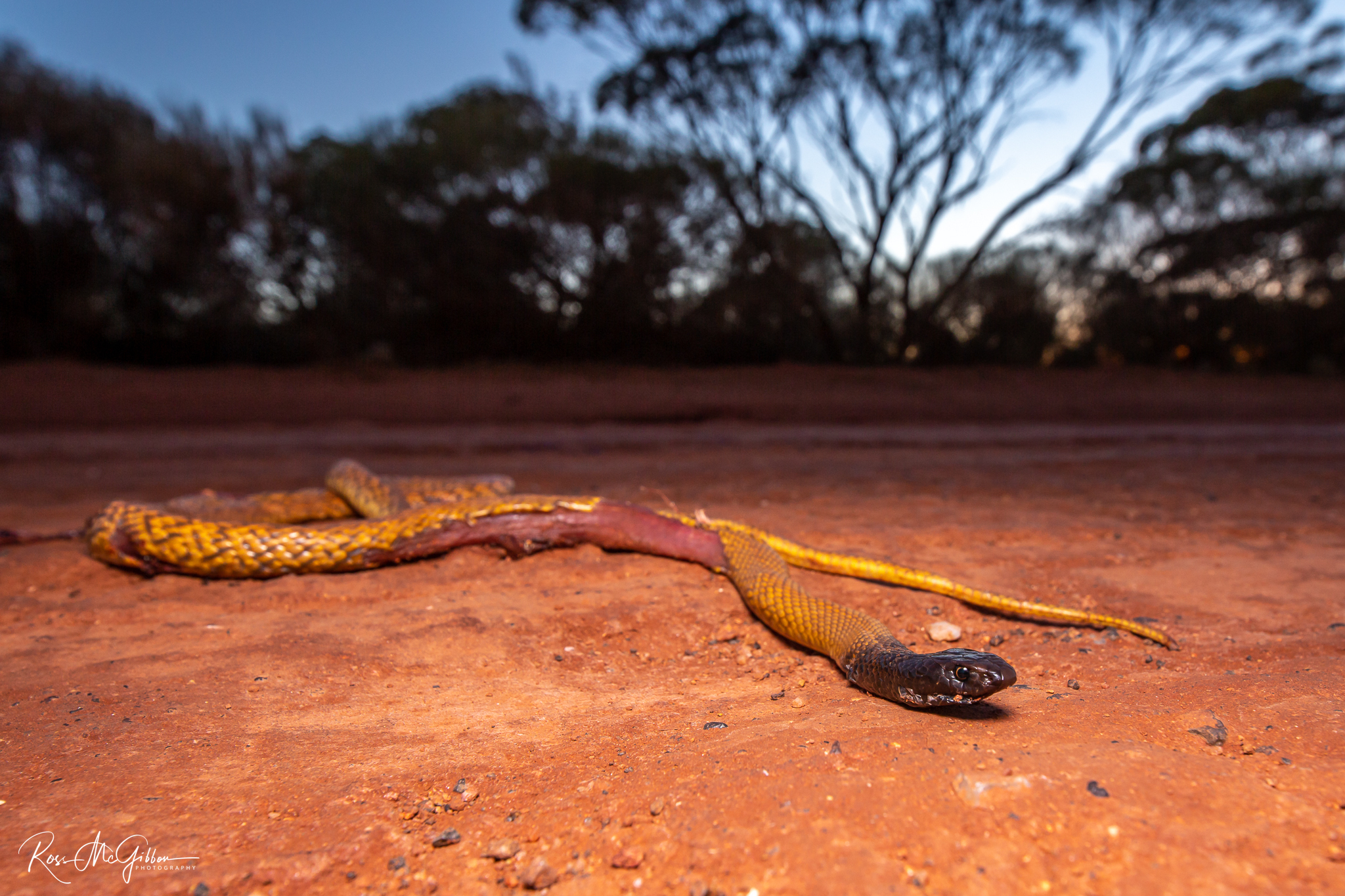
An unfortunate start to the trip: A recently run over Western brown snake, aka Gwardar (Pseudonaja mengdeni)
As the colour drains from the sky, we take a minute to enjoy some dinner and discuss which nocturnal species we hope to encounter after dark. The Desert death adder (Acanthophis pyrrhys) is the number one attraction in this area. However, I fear the temperature is dropping too quickly to support much reptile activity, and my predictions prove correct. By midnight a few geckos are all we have to show for our efforts, and our swags become a more desirable option.
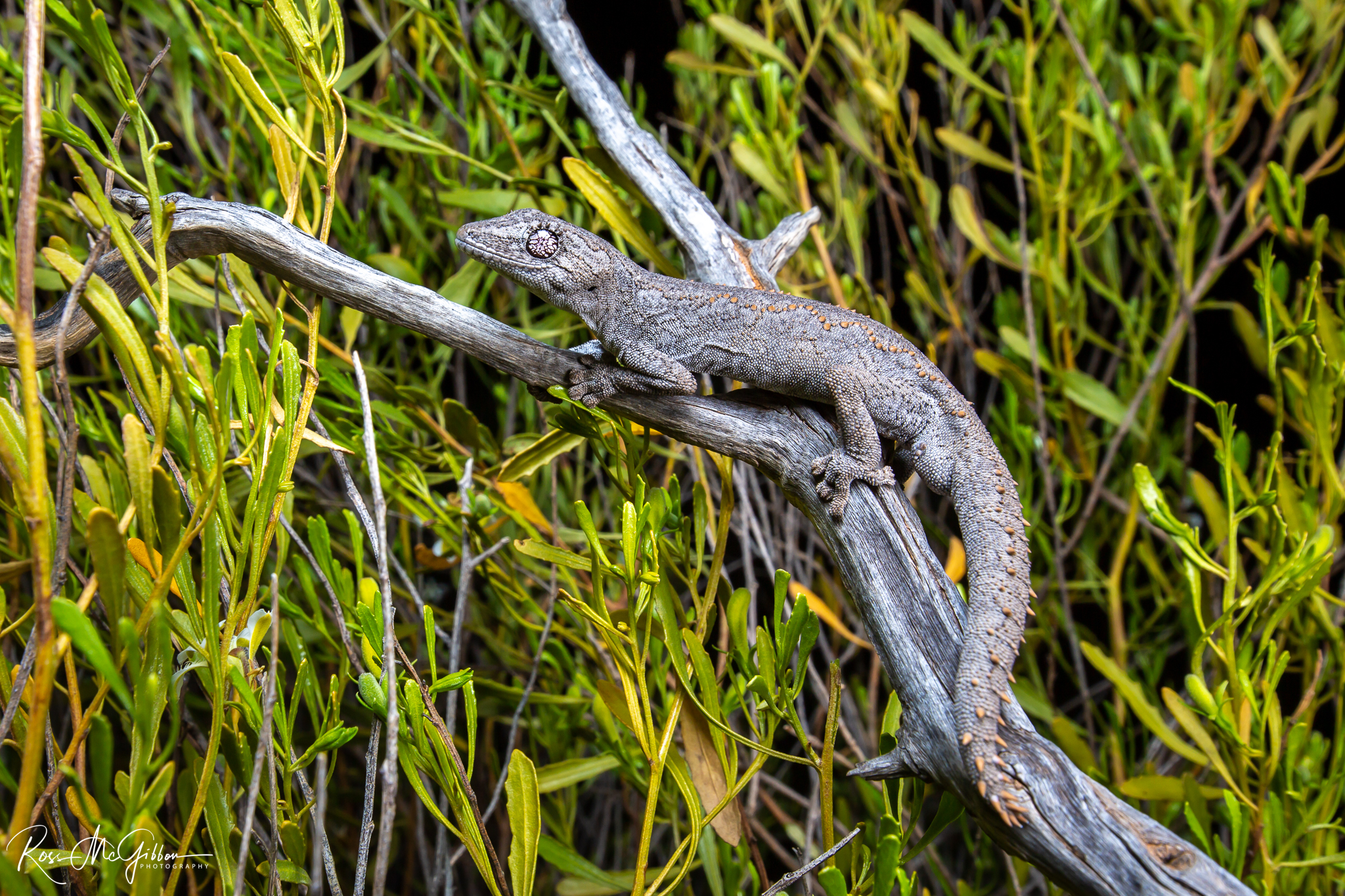
Thorn-tailed Gecko (Strophurus assimilis)
We wake with the birds with almost 1000km of driving ahead of us. The small outback town of Laverton is our last stop for fuel, supplies and phone reception. Tim quickly calls home to explain that we might be out of phone service for up to a week. I feel for Tim's partner, who will no doubt be nervously awaiting a phone call. I just hope we don't have any of the drama of our last trip.
To my surprise, the dirt road into the desert is relatively well maintained, allowing us to travel at a reasonable speed. It's late afternoon when I have to brake for our first snake. This time it is a very- much alive mulga snake, aka king brown sitting on the shoulder of the road with its head in a bush.
We come to a halt and exit the car in a frenzy. Grabbing our cameras, we approach the mulga, which has only just noticed us. Possibly having never seen a human before, the snake reacts by rearing like a cobra and advancing towards us with a flattened neck. This behaviour is known as defensive posturing and comes in handy when deterring predators. We rattle off a flurry of photos before the snake grows tired of us and retreats, leaving our adrenalin levels high.
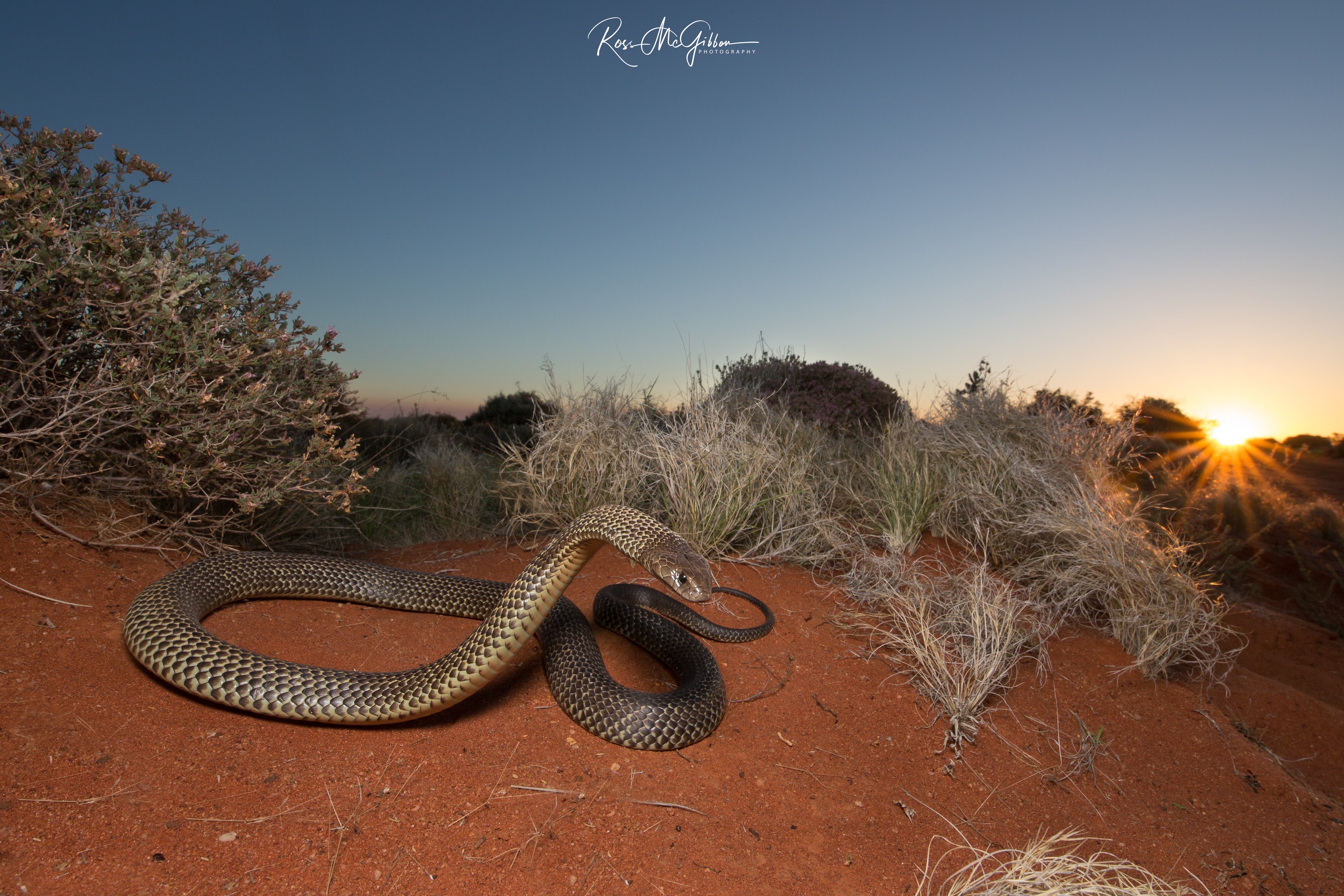

My best shot of the trip: A Mulga snake, aka King Brown (Pseudechis australis) in defensive posture
By nightfall, we have only completed half the distance to our campsite. We need to hurry if we hope to get any sleep before our 4:30 am wake up, but neither of us can resist stopping for another two mulga snakes, a desert banded snake and numerous geckos. Finally, by 1 am, we're in Taipan country. Tired and weary, we pull up in a small clearing in the spinifex and slump into our swags.
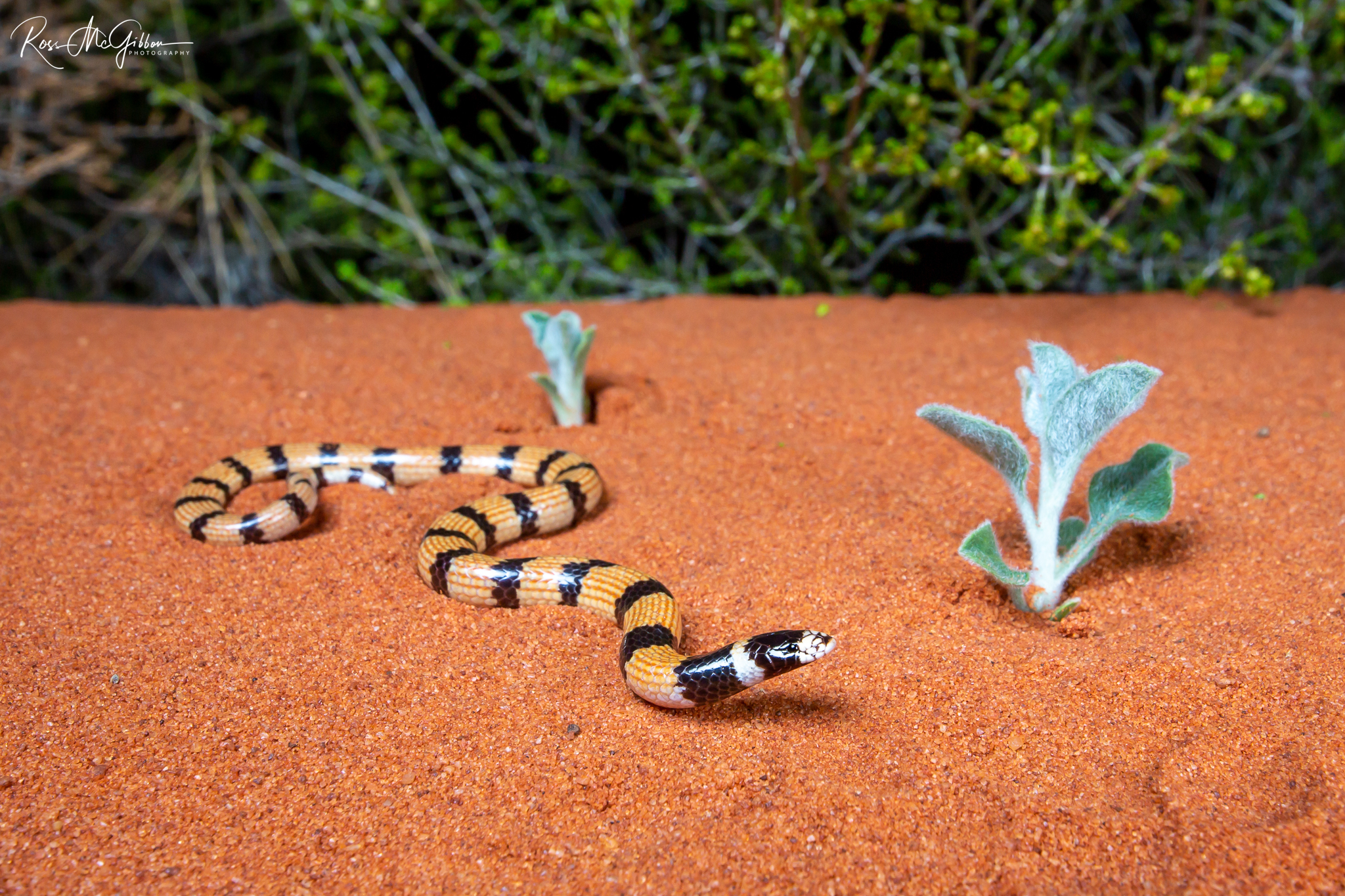
Desert Banded Snake (Simoselaps anomalus)
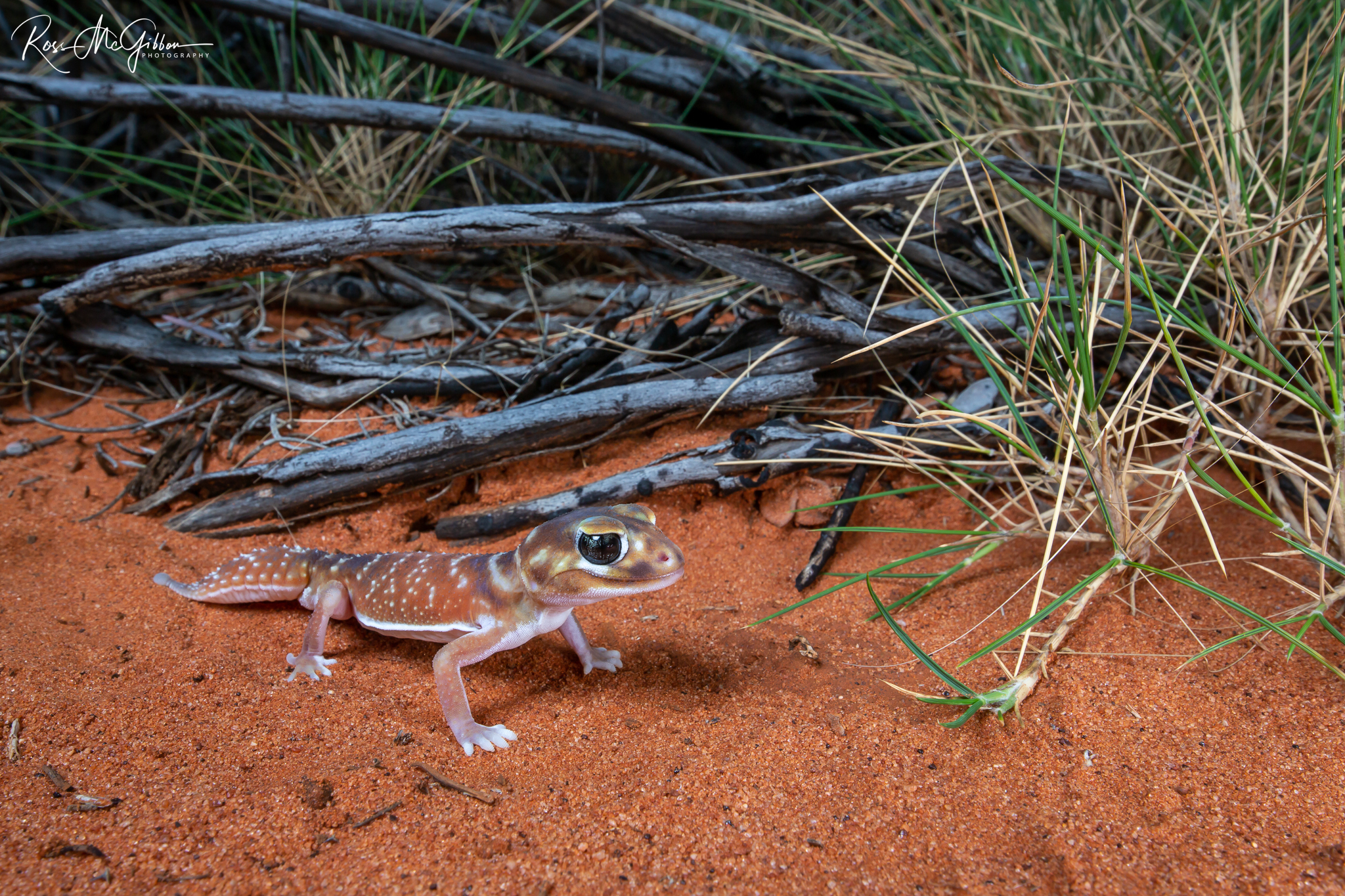
Smooth Knob-tailed Gecko (Nephrurus Levis)
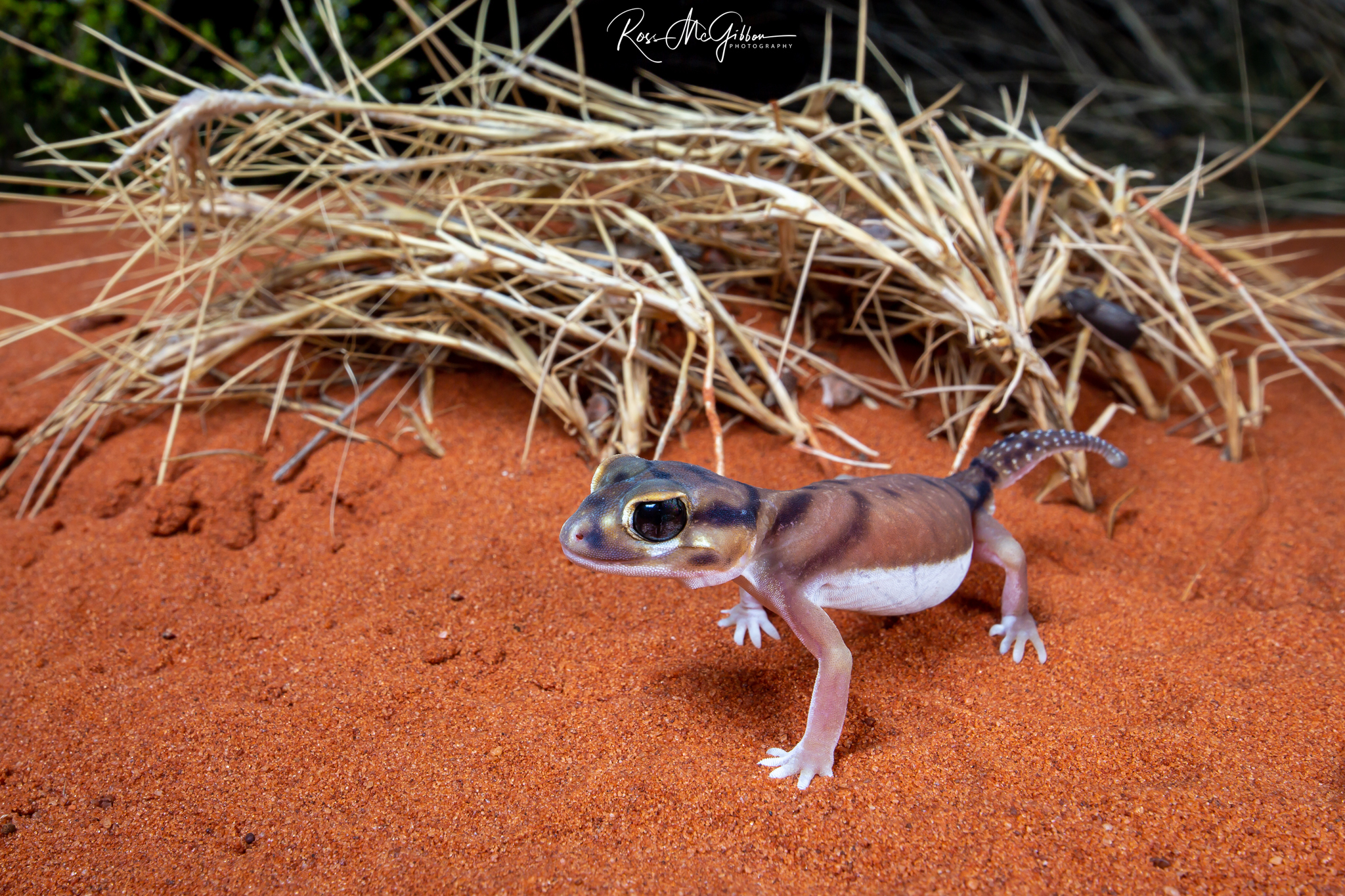
Pale Knob-tailed Gecko (Nephrurus laevissimus)

Jewelled Gecko (Strophurus elderi)
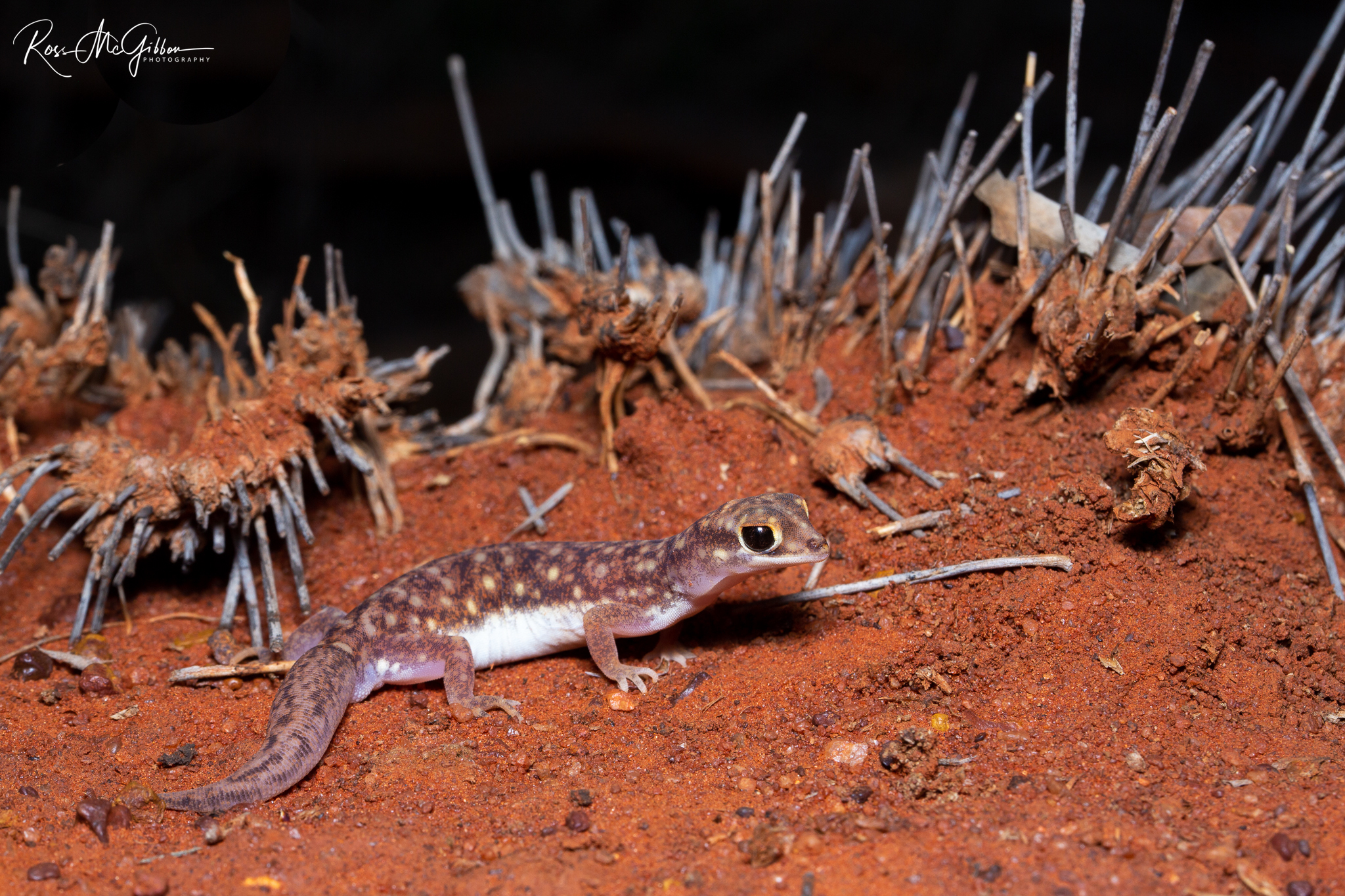
Western Beaked Gecko (Rhynchoedura ornata)
On any other day, I would be cursing my alarm, but today I spring from my swag excited, even after only three hours of sleep. By 5 am, we are searching for taipans. Experience has taught me that cruising through their habitat by vehicle is the most effective way to cover ground. It's a game of luck requiring us to be in exactly the right place at the right time to see one crossing or basking on the track.
We decide it's time for a quick break after scouring the habitat for 3 hours straight. However, the fear of missing out on finding a taipan becomes too much after ten minutes. "Shall we?" I say. No more than fifteen minutes down the road, I spot a long, dark snake cruising slowly across the track ahead. At that length, there is no mistaking what it is. I leap from the passenger side before Tim can stop the car. He isn't far behind, and we approach the 1.8m specimen with cameras at the ready.
As we near the Taipan, it raises its head curiously to assess us. To my amazement, it doesn't alter speed or direction and is seemingly not bothered by us. Most snakes perceive humans as predators at this distance and are quick to flee. Living in such a remote area, I can't help but wonder if this snake has ever encountered humans before.
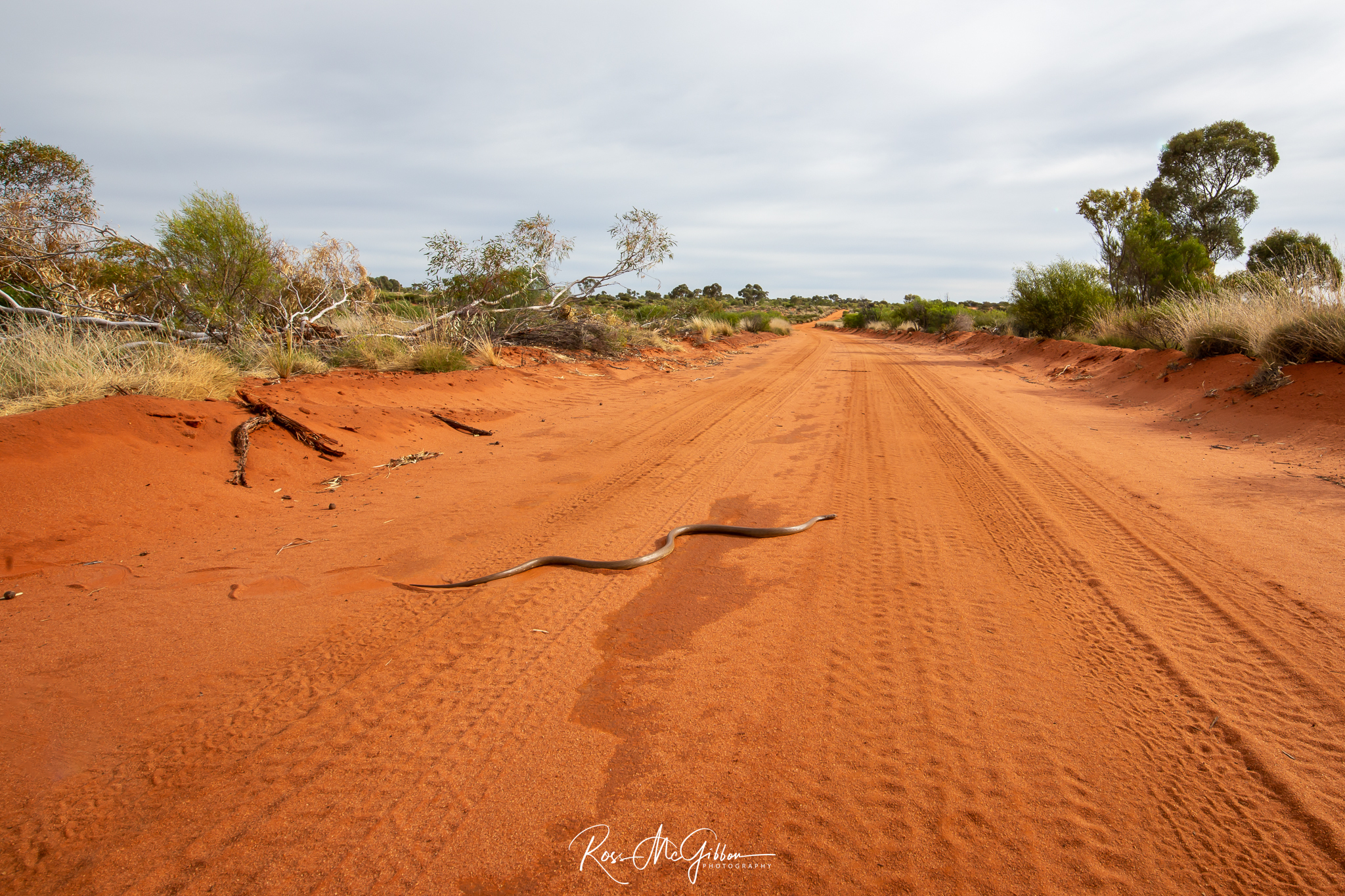
I snap a shot of it in the middle of the track, and we slowly creep closer until we are within two metres. Still, the Taipan keeps its composure, exhibiting no defensive behaviour or signs of wanting to flee. We photograph it as it cruises through the spinifex.

At one point, I position myself directly in the snake's path. It approaches within a metre, raises its head and opens its mouth, exposing just enough of its fangs to warn me what it could do if I don't allow it to pass. This momentary stand-off results in one of my favourite shots of the trip.
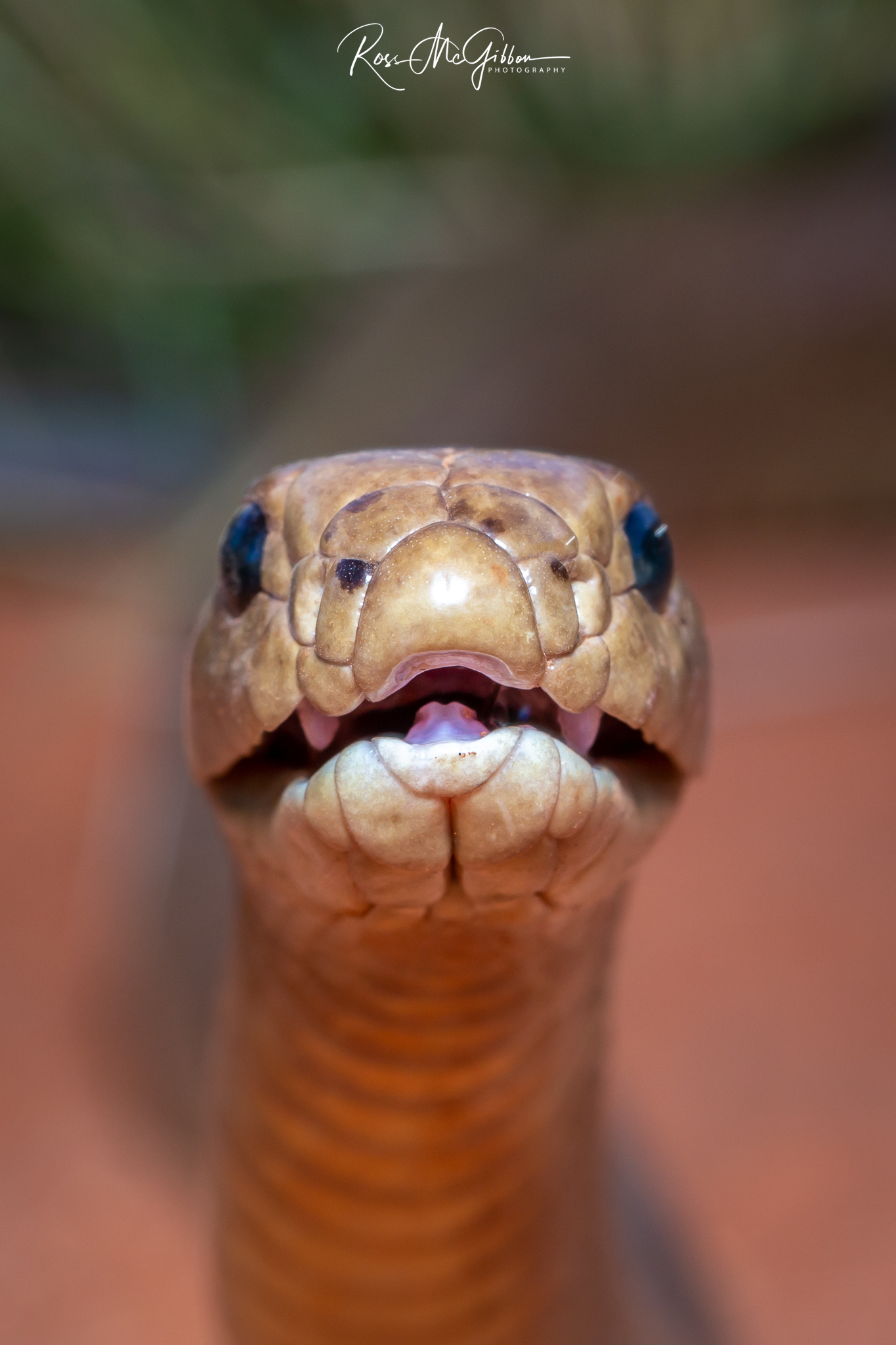
By mid-morning, we have completed our mission and cannot wipe the smiles from our faces. Not only have we found our target species, but we are now among the fortunate few to observe and document one of the most seldom-encountered snakes in Australia. Furthermore, the calm disposition of our Taipan resulted in an encounter one can only dream of as a wildlife photographer.
To view this article on the Aus Geo website, click here - https://www.australiangeographic.com.au/topics/wil...

